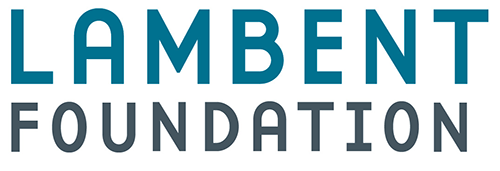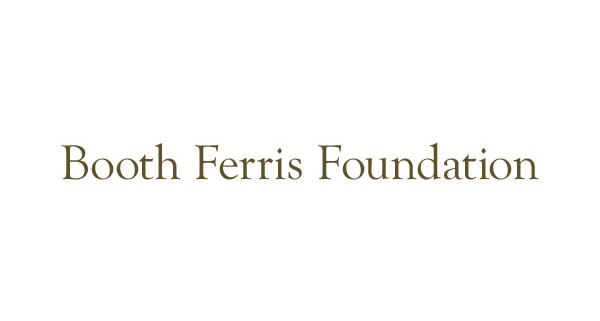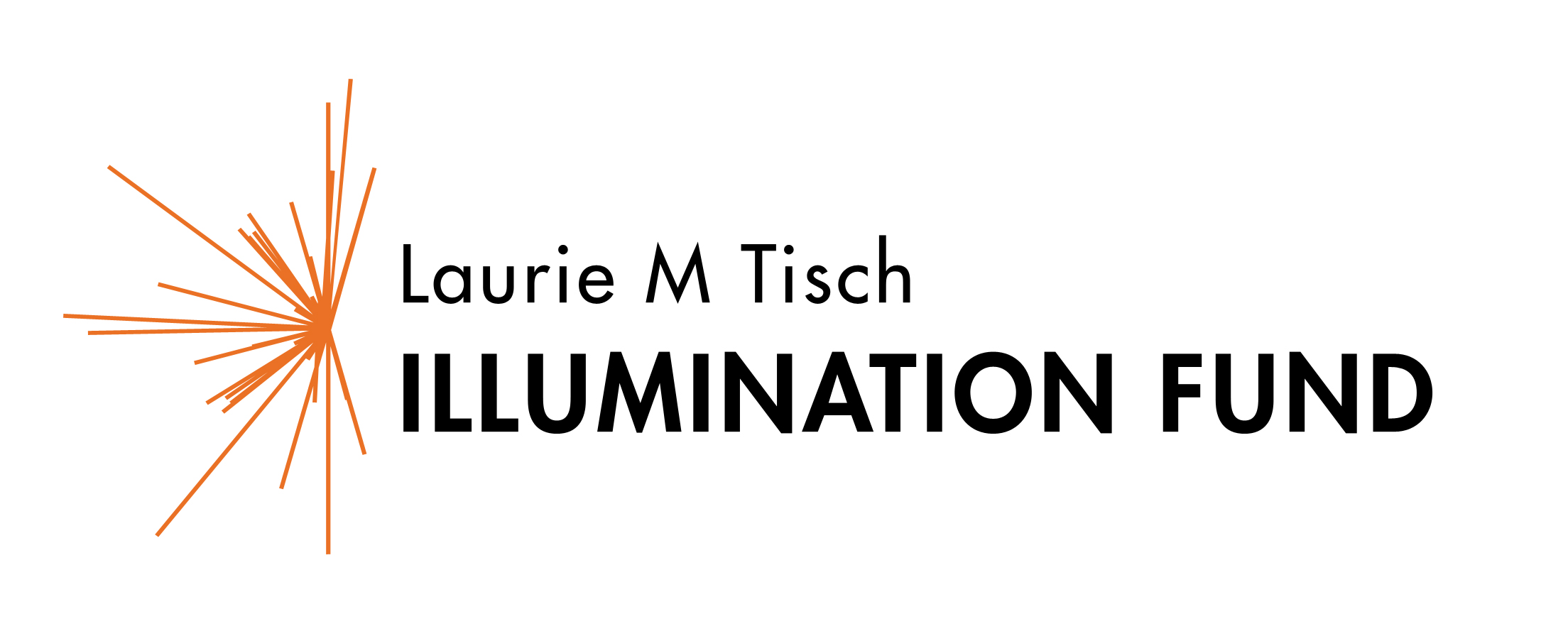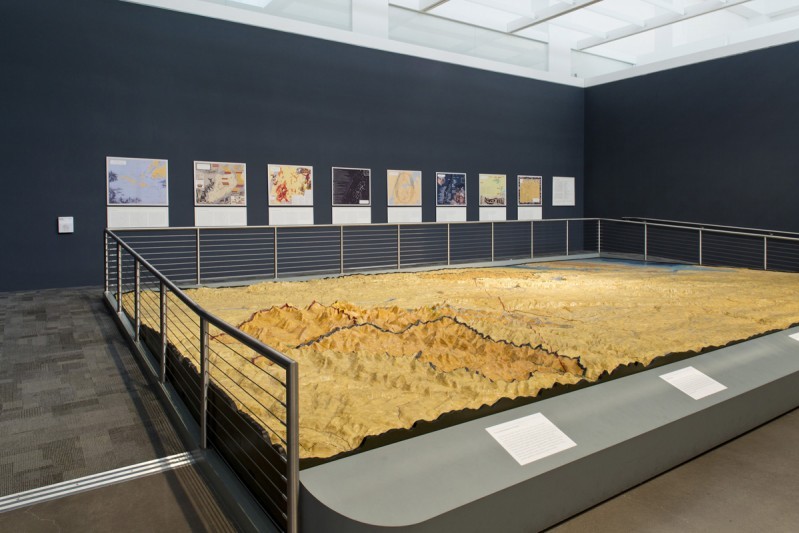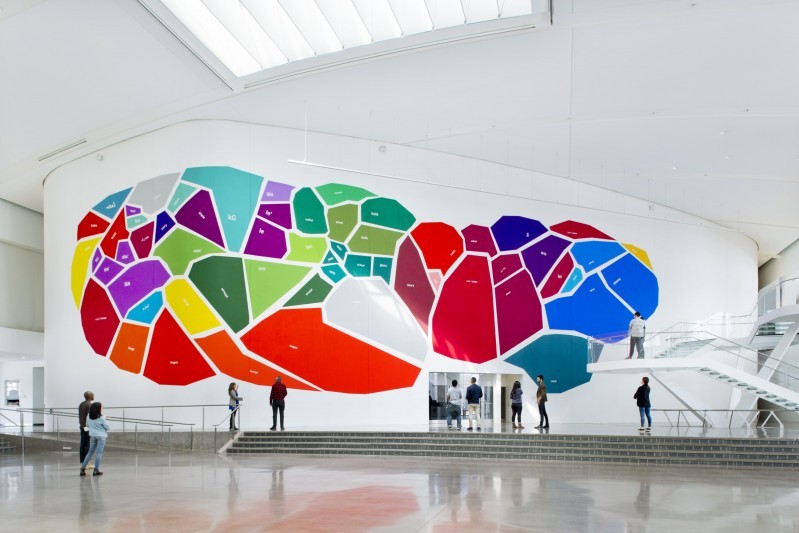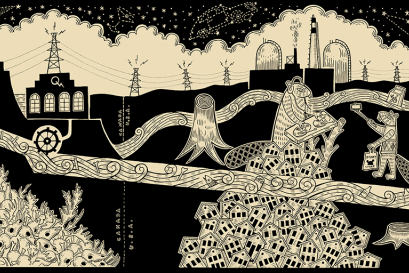Exhibitions - Nonstop Metropolis: The Remix
Nonstop Metropolis: The Remix
04.10.16 – 01.22.17
Maps from Nonstop Metropolis: A New York City Atlas in the Queens Museum's Watershed Gallery
In the Spring of 2016, the Queens Museum will launch a multi-faceted project in collaboration with renowned writer, historian, and activist, Rebecca Solnit. Solnit is the author of 15 books about environment, landscape, community, art, politics, the power of stories, and hope. The roots of this project are found in her remarkable trilogy of Atlas books which propose creative mapping as a means to relay alternative histories of place, specifically in Infinite City: A San Francisco Atlas and in Unfathomable City: A New Orleans Atlas. In 2016, the third and final book in the series will take New York City as its subject. Titled Nonstop Metropolis Solnit is producing this publication with her collaborator geographer Josh Jelly-Schapiro, and a host of renowned writers, artists, historians, and cartographers.
Nonstop Metropolis: The Remix includes:
Artist Commissions: Two new artworks will be created for the Queens Museum by artists Mariam Ghani and Duke Riley, inspired by essays in Solnit and Jelly-Schapiro’s forthcoming New York City Atlas, which respectively focus on the linguistic diversity of Queens and water and power.
Enveloping the Museum’s Watershed model gallery will be Riley’s That’s What She Said, 2016, a sweeping drawing inspired by Water and Power, essayist Heather Smith’s contribution to the Atlas chronicling the development of Manhattan as a history of exploitation of the city’s surrounding natural resources—chief among them, water.
In a second iteration of the Queens Museum’s Large Wall Series, artist Mariam Ghani has created The Garden of Forked Tongues, 2016, a large-scale info-graphic based on data of endangered languages in Queens. Inspired by writer Suketu Mehta’s Atlas essay Tower of Scrabble, it presents New York City as an asylum for languages—the heart of which lies in the cultural and linguistic diversity of Queens.
Printed Broadsides: These four-color pieces will excerpt selected essays and include the wonderful maps from Solnit and Jelly-Schapiro’s book that visitors can take home free of charge. Each broadside will be released once a month starting in May onwards. There will be one on-site and one off-site program to complement each of the broadsides.
Atlas comes alive through programming: Beginning in May 2016, the Queens Museum presents a series of public talks, walks, and urban adventures led by the essay writers from the book, artists, and other imaginative thinkers addressing topics including water and power, linguistic diversity in Queens, walking as an embodied act, the conjoined histories of environmental and financial disaster in Lower Manhattan, wilderness in the City, and Latino radio in NYC. Additionally educational opportunities, map-making workshops, and a celebration of the launch of the Atlas in October 2016 round out the programming slate.
Organizers: Laura Raicovich, Hitomi Iwasaki, Prerana Reddy, and Jose Serrano McClain, with support of students from the Social Practice Queens MFA program at Queens College.
Discover Images of the Exhibition
Learn more about the exhibition
Supporters
The Lambent Foundation; the National Endowment for the Arts, Planned Parenthood of New York City, Alexandra Herzan, Erica Samuels, and the 233 people who supported the project through Kickstarter; the New York City Department of Cultural Affairs and the New York State Council on the Arts with the support of Governor Andrew Cuomo and the New York State Legislature. Additional support is provided by Ford Foundation, Lambent Foundation, Booth Ferris Foundation, the Charina Endowment Fund, The Kupferberg Foundation, and the Laurie M. Tisch Illumination Fund.
